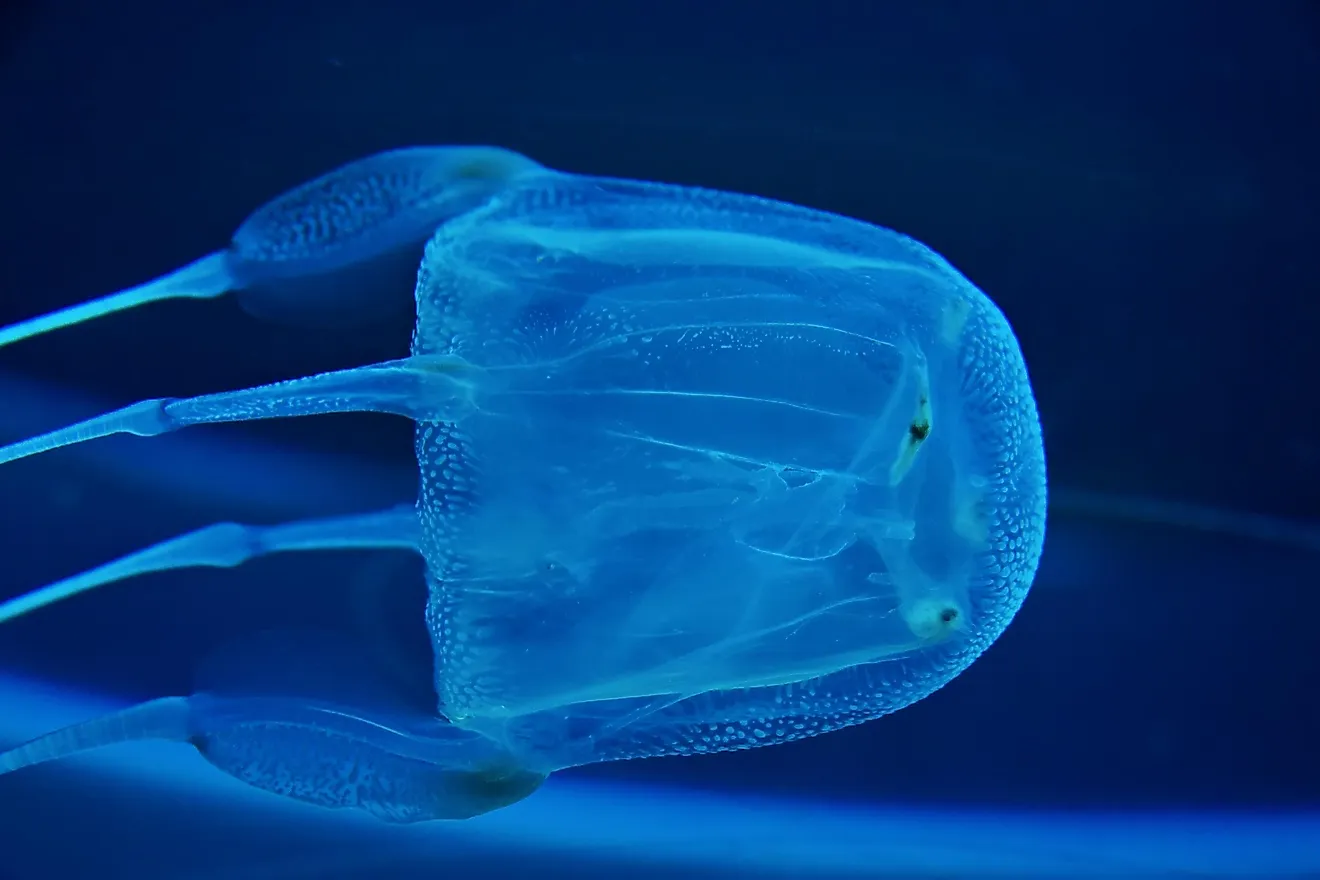

The research team compared samples of Tripedalia maipoensis with those of other closely related species using morphological and molecular methods. In the new species, the velarial canals are biforked into multi-branches, which distinguishes them from other species of the same genus. There are canals in the velarium which run along the bell margins and allow water to enter the bell. In each group of eyes, the researchers believe that two of them have lenses that enable image-forming, while the other four can only sense light.īox jellyfish are also characterised by having a velarium, a membranous and muscular sheet that constricts the opening of the bell. The 24 eyes are equally divided into four groups, and each group of six eyes is located inside a sensory depression called a rhopalium on each side of the bell. Like other box jellyfish, Tripedalia maipoensis has 24 eyes. They can thus swim faster than other kinds of jellyfish. Pedalia, a flat pedal-shaped structure at the base of each tentacle that looks like a boat paddle, allows box jellyfish to produce strong thrusts when they contract their bodies. There are three tentacles that are up to 10 cm long at each of its four corners. It has a transparent and colourless body with an average length of 1.5 cm. It is the fourth described species of Tripedaliidae, and the third described species of the genus Tripedalia around the world. The newly discovered Tripedalia maipoensis belongs to the family Tripedaliidae. Even though the class Cubozoa is one of the smaller groups among the cnidarians, it includes some of the highly venomous marine animals that are widely known in the tropical waters.

Named for its cube-shaped body, the box jellyfish, (or scientifically known as class Cubozoa) belong to the phylum Cnidaria. Although it is currently known only in Mai Po, we believe that this species is also distributed in the adjacent waters of the Pearl River Estuary as the gei wais are connected to the estuary through a tidal channel.” “We named the new species Tripedalia maipoensis to reflect its type locality – where the new species was first found. With collaborators from WWF-Hong Kong, Ocean Park Hong Kong and the University of Manchester, the team collected the jellyfish samples from a brackish shrimp pond, locally called “ gei wai”, in the Mai Po Nature Reserve during the summers of 2020 to 2022, and they found that the samples contained a new species. Each cluster includes a pair of eyes with a sophisticated lens, retina, iris and cornea, although without a central nervous system, scientists aren’t sure how they process what they see.The research team was led by Professor Qiu Jianwen, a Professor of the Department of Biology at HKBU. They also have eyes grouped in clusters of six on the four sides of their bell.

They have developed the ability to move rather than just drift, jetting at up to four knots through the water. Highly-Advanced Adaptationsīox jellies are highly advanced among jellyfish. Each tentacle has about 5,000 stinging cells, which are triggered not by touch but by the presence of a chemical on the outer layer of its prey. Up to 15 tentacles grow from each corner of the bell and can reach 10 feet in length. They are pale blue and transparent in color and get their name from the cube-like shape of their bell.

Range and Appearanceīox jellies, also called sea wasps and marine stingers, live primarily in coastal waters off Northern Australia and throughout the Indo-Pacific. Survivors can experience considerable pain for weeks and often have significant scarring where the tentacles made contact. It is so overpoweringly painful, human victims have been known to go into shock and drown or die of heart failure before even reaching shore.
#Box jellyfish species skin#
Their venom is considered to be among the most deadly in the world, containing toxins that attack the heart, nervous system, and skin cells. The infamous box jellyfish developed its frighteningly powerful venom to instantly stun or kill prey, like fish and shrimp, so their struggle to escape wouldn’t damage its delicate tentacles.


 0 kommentar(er)
0 kommentar(er)
